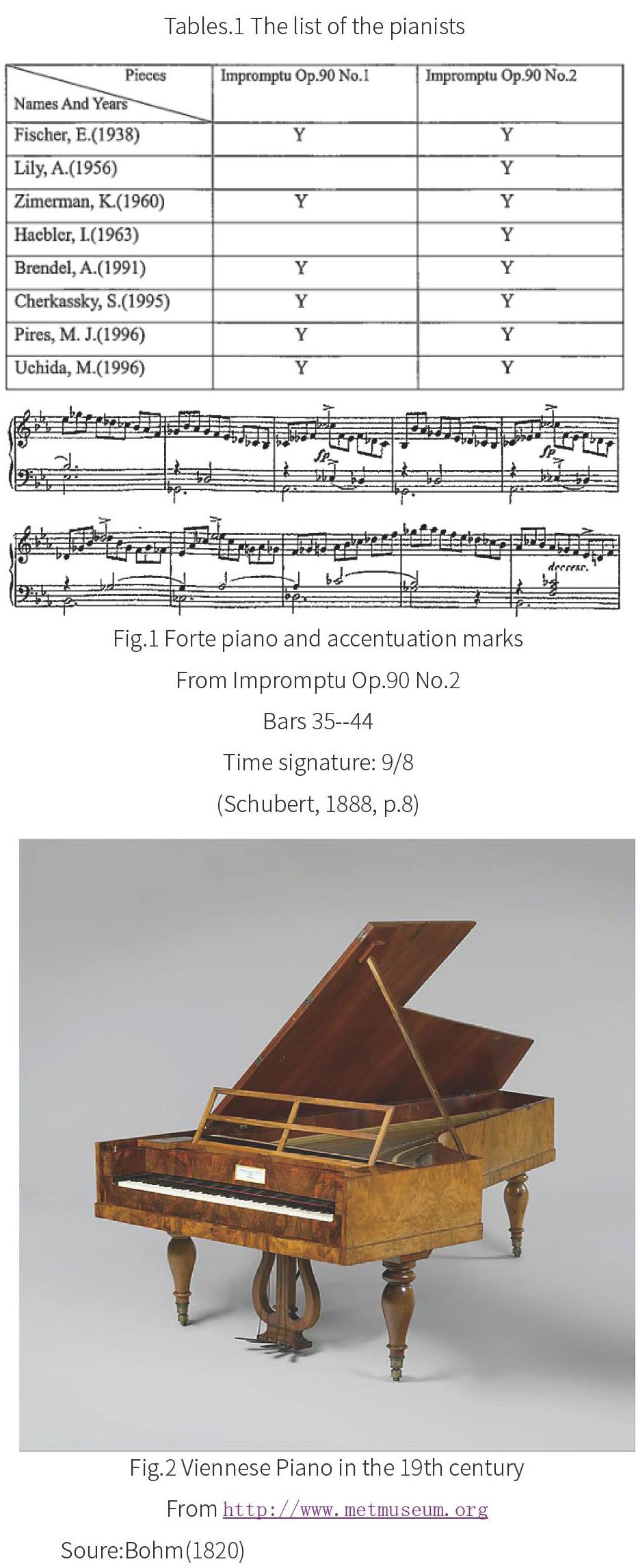Analyze differing interpretations of the articulation in Schubert’s Impromptu Op.90 No.1 and No.2
2018-10-16成书婷
成书婷

Classic musicians are now trained to play music accurately to the composers intention,such as following the right tempo and expressing the right meaning of the marks. Consequently, performers not only need to have brilliant technique and confidence to pieces well, they might have to analyze the background of the play pieces and play them as intended by the composers.
This essay is going to analyze differing interpretations of articulation in Schuberts Impromptu Op.90 No.2(1827), which focus on the fp (shortened from forte piano) and accentuation marking “>”. In this section,there will be some comparisons of interpretations among different pianists:the musicians before the 1960s and the modern pianists (after the 1990s). Due to the different ways to interpret the pieces, it is much obvious to notice the diversities.
After making comparisons, it will discuss view of how to play them more historically informed.
Articulation is the style in which a works notes are performed. Its use is written with articulation marks, and the effect alters the sound of the notes and creates relationships between them. When the performers play the music, they can notice various kinds of articulation marks in the editions, which mean that they might try their best to make the sound more changeable.
As a result, in order to make dramatic melodies, there are some common marks in Schuberts piano music. For example, in the Impromptu Op.90 No.1, there are quite a lot of accentuation marks such as “>”,which are written either above or below the note or chord and loud and then immediately soft marks fp.
Additionally, these marks have different meanings. “>”means the marked notes have an emphasized beginning and then taper off rather quickly. Classically trained musicians correctly know this mark as “marcato”, though it is usually simply referred to as an accent. fp is an indication to play loudly in forte, followed immediately by piano. As Montgomery (2003:143) described:” Clearly, a strong dynamic follows it immediately further into the same note.” What is more, as Halford (1977) said that the signs fp, sf and fz are obviously exchangeable, and they are written differently in various early editions. They show that a chord which is to be performed louder than chords marked “>”. Actually the “>” sign only indicates an accent, and is neither related to nor derived from the signs that are of a roughly similar shape (Rosenblum, 1991:434-439).
